
Baroness Anna Elisabeth Franziska Adolphine Wilhelmine Louise Maria von Droste zu Hülshoff, known as Annette von Droste-Hülshoff, was a 19th-century German poet, novelist, and composer of Classical music. She was also the author of the novella Die Judenbuche.
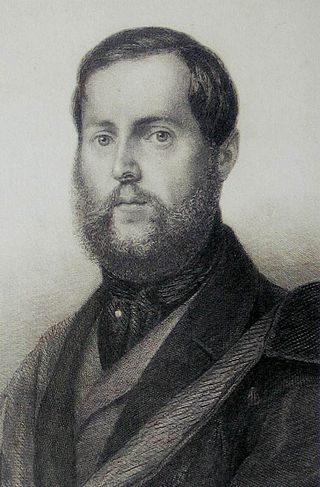
Levin Schücking was a German novelist. He was born near Meppen, Kingdom of Prussia, and died in Bad Pyrmont, German Empire. He was the uncle of Levin Ludwig Schücking.

Liebster Gott, wenn werd ich sterben?, BWV 8, is a church cantata for the 16th Sunday after Trinity by Johann Sebastian Bach. It is a chorale cantata, part of Bach's second cantata cycle. Bach performed it for the first time on 24 September 1724 in St. Nicholas Church in Leipzig. The cantata is scored for SATB singers, four wind instruments, strings and continuo.

Baron Joseph Maria Christoph von Lassberg was a German antiquary.

Michael Altenburg was a German theologian and composer.
Volkslied is a genre of popular songs in German which are traditionally sung. While many of them were first passed orally, several collections were published from the late 18th century. Later, some popular songs were also included in this classification.
There are 52 chorale cantatas by Johann Sebastian Bach surviving in at least one complete version. Around 40 of these were composed during his second year as Thomaskantor in Leipzig, which started after Trinity Sunday 4 June 1724, and form the backbone of his chorale cantata cycle. The eldest known cantata by Bach, an early version of Christ lag in Todes Banden, BWV 4, presumably written in 1707, was a chorale cantata. The last chorale cantata he wrote in his second year in Leipzig was Wie schön leuchtet der Morgenstern, BWV 1, first performed on Palm Sunday, 25 March 1725. In the ten years after that he wrote at least a dozen further chorale cantatas and other cantatas that were added to his chorale cantata cycle.

"Vom Himmel hoch, da komm ich her" is a hymn text relating to the Nativity of Jesus, written by Martin Luther in 1534. The hymn is most often sung to the melody, Zahn No. 346, which first appeared in a 1539 songbook and was probably also composed by Luther. This classic Christmas carol remains popular and has inspired many choral and organ works by other composers.
The Buxheim Organ Book is a manuscript created around 1460/1470 with 256 original compositions and arrangements for keyboard instruments for the Buxheim Charterhouse in Germany, in today's district of Unterallgäu. Most of the composers are anonymous, but some are also known composers of the time.
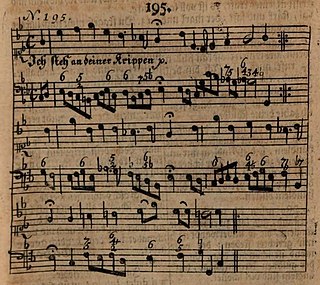
"Ich steh an deiner Krippen hier" is a German Christmas hymn, with lyrics by Paul Gerhardt which were first published in 1653. It was then sung with an older melody by Martin Luther, but a melody which was likely created by Johann Sebastian Bach for Schemellis Gesangbuch of 1736 is now part of current Protestant and Catholic hymnals.

The Responsories by the German composer Max Reger are 20 short settings of mostly biblical texts in English, to be used as responsories in Lutheran church services. Composed in 1911, they were first published in Philadelphia in 1914 as The Responsories.
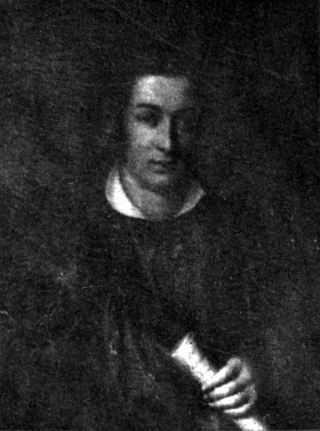
Friedrich Wilhelm Arnold was a German musician, music seller, publisher and folk-song collector.
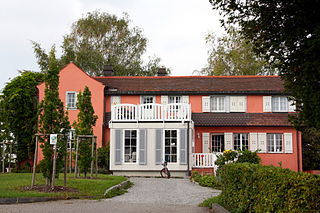
The Little House, also called the Prince's House (Fürstenhäusle), is a historic house and museum located in Meersburg, Germany, overlooking Lake Constance. It was the residence of the poet Annette von Droste-Hülshoff, to whom the museum is dedicated.

Konrad Ameln was a German hymnologist and musicologist, who wrote standard works about Protestant church music.

"Liebster Gott, wann werd ich sterben" is a Lutheran hymn which Caspar Neumann, an evangelical theologian from Breslau, wrote around 1690. The topic of the hymn, which has five stanzas of eight lines, is a reflection on death. An elaborate analysis of the hymn's content was published in 1749. A few text variants of the hymn originated in the 18th century. Neumann's text is usually sung to the hymn tune of "Freu dich sehr o meine Seele".
Martin Karl Woldemar Hasse was a German university lecturer, composer and music writer.
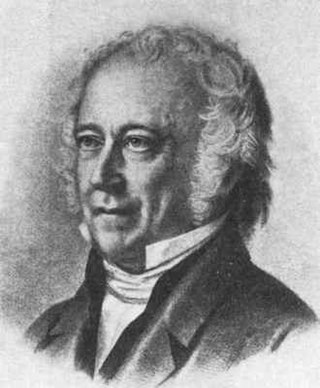
Carl Georg Vivigens von Winterfeld was a German lawyer and musicologist. He studied music from the 16th to 18th centuries, and was instrumental in reviving it, especially the music by Heinrich Schütz.















